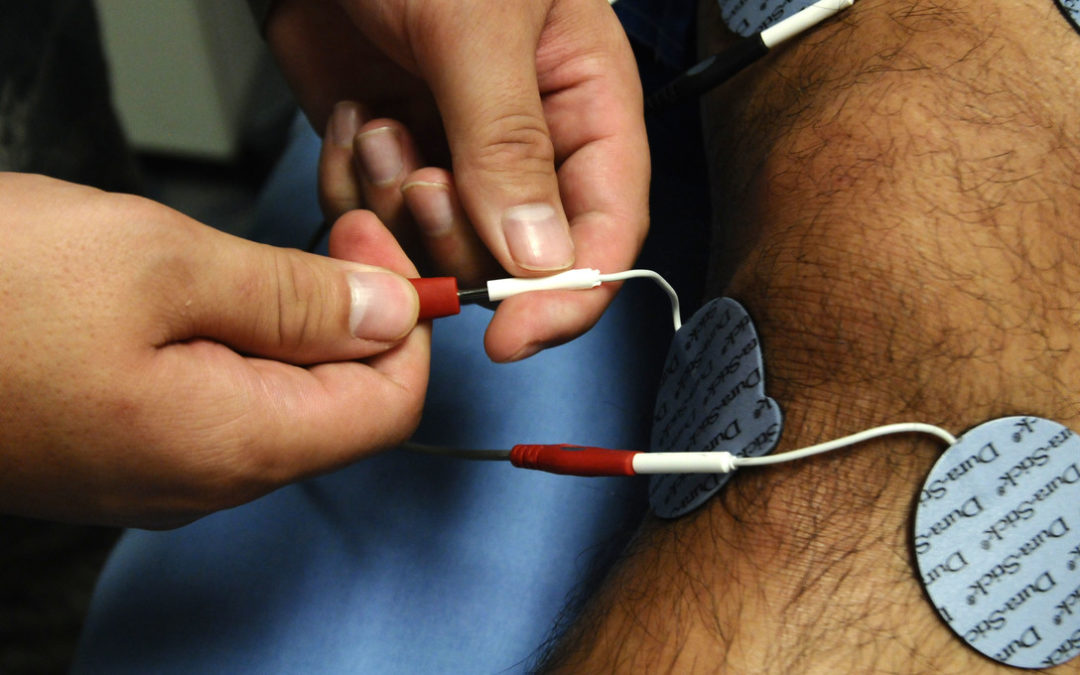Electrical stimulation therapies for active duty military with patellofemoral pain syndrome: a randomized controlled trial
Talbot LA, Solomon Z, Webb L, Morrell C, and Metter J. Military Medicine. 2020. Epub Ahead of Print.
https://pubmed.ncbi.nlm.nih.gov/32248227/?dopt=Abstract
Take-Home Message
Participants with patellofemoral pain syndrome who received a home exercise program and electrical stimulation had improved strength compared with a home exercise program alone.
Summary
Patellofemoral pain syndrome (PFPS) is a common injury among athletes and active-duty military personnel. PFPS is often treated with a home exercise program. The use of electrical stimulation (transcutaneous electrical stimulation, neuromuscular stimulation, etc.) has also been recommended, but empirical evidence for this is lacking. Therefore, Talbot and colleagues completed a randomized controlled trial to compare home exercise programs with and without each type of electrical stimulation. The authors recruited 130 military personal diagnosed with PFPS and randomized them into 1 of 4 treatment groups:
- home exercise program,
- home exercise program + neuromuscular stimulation,
- home exercise program + transcutaneous electrical stimulation, and
- home exercise program + alternating neuromuscular and transcutaneous electrical stimulation.
All participants received identical home exercise programs for 9 weeks along with instructions for all exercises before the start of the study. Participants in 3 treatment groups also received battery operated preset electrical stimulation units. They completed the treatment protocols for 20 minutes on alternating days concurrently with the home exercise program. Four pads were placed in a crisscross pattern around the knee. At baseline and 3, 6, and 9 weeks participants completed a 1) strength assessment for knee extension and flexion, 2) 30-second chair stand test, 3) timed stair climb test, 4) forward step-down test, 5) 6-minute timed walk test, and 6) visual analog scale to assess knee pain. The 3 electrical stimulation groups had greater strength gains compared to the group performing the home exercise program alone. The authors observed no other differences in knee pain over time between groups.
Viewpoints
The current study demonstrates that incorporating these types of electrical stimulation into the treatment protocols for PFPS would be beneficial in restoring knee strength, which would be beneficial when a patient returns to activity. The authors also compared transcutaneous and neuromuscular stimulation; however, they found no differences between groups. While the current study improves the understanding of PFPS treatments, more research is needed to optimize the clinical use of electrical stimulation for PFPS. Based on these results, clinicians should incorporate electrical stimulation into treatment protocols for patients with PFPS to improve strength.
Questions for Discussion
Do you incorporate electrical stimulation into your PFPS treatment programs? If so, which type? Have you found it to be effective?
Written by: Kyle Harris
Reviewed by: Stephen Thomas
Related Posts
Combining Central and Peripheral Neurostimulation to Reduce Pain
Electrical Stim Treatments Improve Patients with Low Back Pain
TENS to Treat Knee Pain Induced Quadriceps Inhibition?!
ACL Injuries Are Getting on My Nerves
“Shock”ingly No Improvements in Ankle Sprain Outcomes


